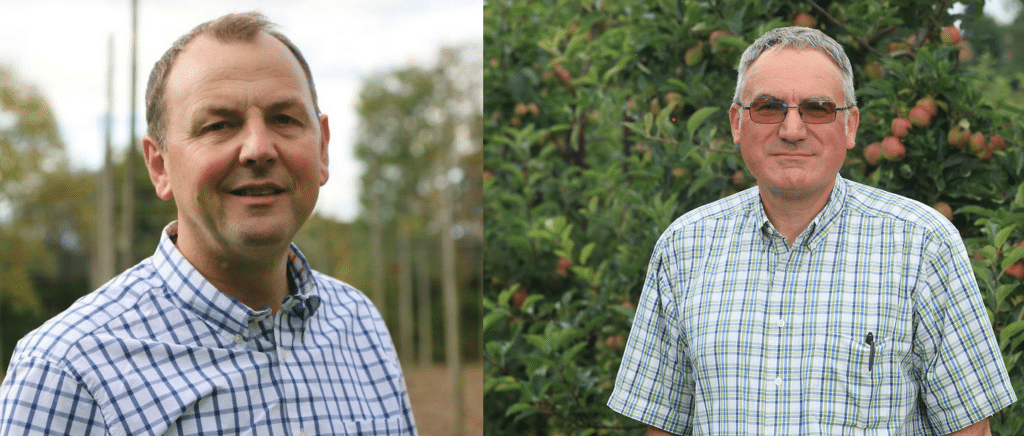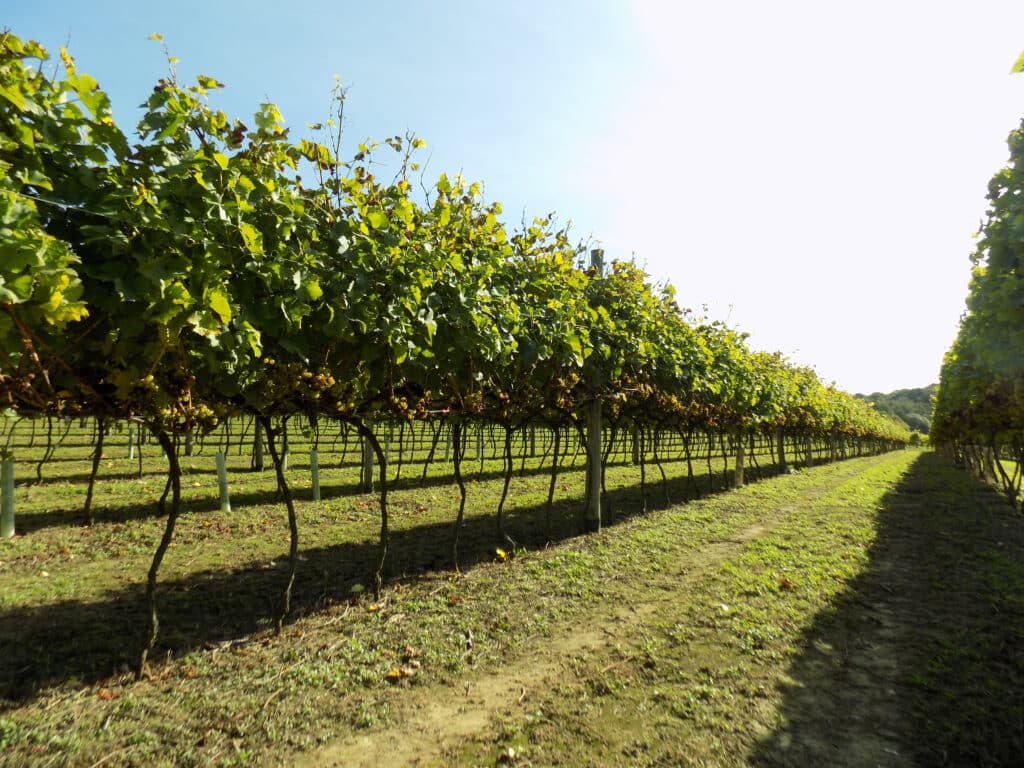New era for tackling orchard pests – The Fruit Grower
Controlling insect pests in apple and pear orchards may require a rethink this season following the loss of more options from the armoury ...
The end of insecticide Gazelle’s (acetamiprid) approval in top- fruit last year took away another important tool for controlling a variety of pests in orchards, leaving some growers questioning how to fill this gap. While there are some new products in the pipeline for future years, more active substances are due to be lost soon. Indoxacarb, for example, offers a potential alternative for apple blossom weevil (ABW) control. However, 2025 will be the last season of use for the active before regulatory approval expires, its use on crops is also not allowed by some retailers. Another is Batavia (spirotetramat), which has a final use date in the UK of January 2027, having already been removed in the EU.
Accuracy is everything
So, what does this mean going forward? While options are diminishing, there is still a good range of conventional and biorational products available to growers, but getting the most from them will require greater focus, says Hutchinsons’ horticultural technical manager Jonathan Blackman. Many options generally offer less broad-spectrum activity than in the past, often with less persistence, so close monitoring, careful product selection, accurate timing and precise application are essential, he adds.
“One advantage of a product like Gazelle was that it did cover quite a lot of pests in one go, while being relatively friendly to predatory mites. The answer to how we replace it is not going to be with one product, because there are going to be specific pests that you’ll have to target at specific timings and conditions. Growers will have to select carefully what they need to go for at different stages through the season, while also recognising any potential impact on beneficials. Don’t spray for a pest unless you know you’ve got a problem”.
New era
Hutchinsons’ Rob Saunders adds that growers with large areas to cover with limited sprayer capacity may struggle in this “new era” when far greater precision is needed for timing and conditions. This makes it more important to prioritise the pests that need controlling and the ones that can perhaps be tolerated. He also points out that as chemical control becomes more targeted, some minor pests may start to show up in greater numbers, as they are not being incidentally controlled by broad-spectrum products.
“We’ve seen before how apple blossom weevil started to become an issue in dessert apples as chemistry became more targeted for summer pests”. Rhynchites weevil, and some hard bodied pests, such as forest bug (Pentatoma rufipes), could become more common with less incidental control, the latter perhaps more so in pears than apples. Another to watch for is the capsid bug, which may also become a bigger issue, although incidence is often quite sporadic, says Rob Saunders.
Early season options
The focus for apple growers early in the season is usually on apple blossom weevil control, and aside from indoxacarb, Dr Blackman says the main options generally come down to either pyrethroids, such as deltamethrin, or Spruzit (pyrethrins plus naturally derived rapeseed oil). With much lower persistence than synthetic pyrethroids, Spruzit poses less risk to beneficial insects. However, that also means that accurate timing is essential, he says. “It’s more a question of what beneficials you hit at the time of spraying, although that is true of the pest as well. The best control of apple blossom weevil comes if you spray on a nice sunny, warm day (16-18C) in the afternoon when there’s maximum activity”. Such conditions are not always experienced in March, and a further challenge is when cool mornings reduce pest activity, making it hard to fully identify risks when monitoring by collecting a beat sample, he notes.
Careful monitoring is vital, but there should also be an understanding of ABW incidence from previous seasons, to help guide treatment decisions, advises Rob Saunders. “The tendency is that you’ll see some ABW one year, then a bit more, sometimes a lot more, the next. It would be unusual for it to go from nothing to devastating in one year, so considering the pest history can help”.
If aphids start to appear through April, then Mainman (flonicamid) offers a very selective option for targeting rosy apple aphid and other aphid species. It has lasting activity and persists in the leaves treated at the time of spray application for 21 days and has an alternative mode of action, so it helps with resistance management.
However, as a translaminar product that works by aphids feeding on treated leaves and taking up the active, using it at the pre-blossom timing means there is only likely to be a small area of green tissue to target. Also, if conditions are cold, plant growth will be reduced, resulting in limited movement of active within the plant, Rob Saunders says. “Growers might get better value from using Mainman post- flowering, but in high-risk areas, such as parts of Kent, pre-flowering control of rosy aphid will be needed at pink bud stage, before too much damage is done”.
Alex Cooke of Certis Belchim agrees that early control of rosy apple aphid is critical, ideally before they start curling leaves, but he acknowledges that timing early applications is tricky when there is limited leaf area. “There’s a fine balance between having enough leaf area to apply Mainman onto, and therefore get the most out of it, versus being too close to the start of flowering. This is especially true in those varieties that barely show any leaf at all by flowering”. Apply Mainman in warm, actively growing conditions for best efficacy, and adjust spray water volumes to tree canopy size for optimum coverage.
Petal-fall priorities
Previously, a petal-fall application of Gazelle proved valuable for picking up many different pest species, so without this option, close monitoring of orchards and understanding pest history will be key to prioritising appropriate treatments, Dr Blackman says. “There won’t be obvious routine things you can do instead”.
Sawfly is often an issue at petal fall, but Rhynchites weevil may become more common in the future, especially in sites close to hedges or woodland, as with winter moth, he notes. “For sawfly, monitor closely and treat with something like spinosad after 80% petal fall if required. It’s quite broad spectrum, so isn’t great for beneficials, but will give some caterpillar control, so might also pick up any late-hatching winter moths”.
Spruzit may also fit at this timing for control of aphids, weevil, and capsid, although it too has a relatively broad spectrum of control that should be considered, and is broken down by high UV light, reducing its persistence.
With more leaf area at this timing, Mainman applied at full rate should work well for aphid control, and its selectiveness will help to minimise any potential impact on beneficials present. If spider mite is an issue, either fruit tree spider mite or two-spotted spider mite, another option is Eradicoat Max (maltodextrin). “As a physically acting contact product, you need to get really good coverage, and apply maltodextrin when pests are active, which is likely to be around the middle of May,” says Dr Blackman.
Rob Saunders says that mites are often on the underside of leaves, which poses a “really challenging target” that requires extra effort to hit.
Growers may need to use higher water volumes than they are used to and calibrate air assistance accurately to maximise deposition. For this reason, maltodextrin is best applied as a separate spray, not tank mixed with other products, to focus on achieving best results, he says. Given the importance of application in getting the best from products like Eradicoat Max, Alex Cooke urges growers to test spray coverage with water sensitive paper ahead of making any key applications. “Most growers might do this once a year at the beginning of the season, but whether you’re applying Spruzit for weevil, or Kanemite for spider mite, testing your sprayer coverage and making the relevant adjustments to ensure product reaches where the target pest is, really is key”. Nozzl choice, forward speed, and other aspects of sprayer setup and application must also be considered, he adds.
Late summer
By July/August, the aim is for most pests to be under control, although, depending on the season, aphids may still be active and require treatment. Equally, if conditions are hot, this can favour the buildup of mite populations, with the risks likely to be increased where beneficial insect populations have been reduced by preceding treatments earlier in the season, says Rob Saunders. Eradicoat Max could be an option if mite populations are increasing, although with maximum foliage on trees at this time, coverage can be particularly challenging.
Summer pruning could help though, as this improves spray penetration into the canopy, and allows more light to reach ripening fruit, notes Alex. Dr Blackman says that Kanemite (acequinocyl) offers a very effective “backstop” in high pressure mite situations. The product controls all stages of spider mite and provides rapid knockdown (within 1 hour), good ‘rainfastness’, and is persistent for eight hours.
Beneficial balance
Dr Blackman says that growers have made huge progress in building up a balanced profile of beneficial insects in orchards over the past 35 years, and care must be taken not to undo this good work with inappropriate product use or timing. Natural predation of red spider mite by Typhlodromus pyri, for example, has made a huge difference to control, reducing the need for chemical intervention in many situations, he says.
“The advantage we’ve had from products until now is that there’s been a bit more leeway with them because of their persistence, and relative safety to many beneficial insects. But with products we’re going to have to use now, there’s perhaps more of a trade-off between pest control and the impact on beneficials”.
For example, some growers may need to tolerate a level of blossom weevil to protect populations of Typhlodromus pyri, which are key for spider mite control. Close monitoring of pest numbers, and the population of beneficial insects, will be crucial going forward, Alex adds. “For a fully integrated pest control strategy, growers need a better understanding of the biodiversity and wider environment within their orchard”.
Longer-term, Rob Saunders notes that research into alternative pest control options is underway within the sector. One project is looking at how pests identify and locate apple trees, and whether those attractants can be used as a decoy to divert pests elsewhere, away from the orchard. Work is also ongoing in soft-fruit to see if a combination of repellants applied to the crop, and attractants applied around the perimeter, can be used to reduce pest pressure within crops.
IPM advice for orchard pests
- Monitor orchards closely throughout the season to identify target pest species and any buildup of numbers
- Monitor populations of beneficial insects
- Only treat when pest thresholds are met – see the AHDB Apple Best Practice guide.
- Consider how any treatment will impact beneficial populations
- Select products according to target pests and risks to beneficial insects
- Ensure that products are applied in the optimum conditions needed for maximum efficacy – conditions may vary for different products and modes of action
- Be prepared to treat areas quickly once pest thresholds and optimum conditions are met – plan product strategy and ensure materials are on-farr in good time
- Consider steps to help further support beneficial insect populations. For example, mowing alternate rows, ‘no-mow’ May, leaving wild areas, or planting stewardship mixes around headlands



